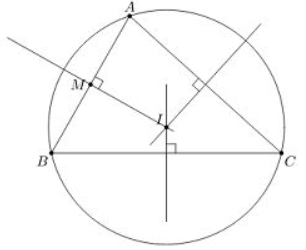Vấn đề bạn thường hay gặp khi luyện reading
 Bài đọc có quá nhiều từ mới, bạn không hiểu câu hỏi mà có quá ít thời gian
Bài đọc có quá nhiều từ mới, bạn không hiểu câu hỏi mà có quá ít thời gian
 Bạn đã làm rất nhiều bài đọc nhưng trình độ và điểm số vẫn không hề cải thiện
Bạn đã làm rất nhiều bài đọc nhưng trình độ và điểm số vẫn không hề cải thiện
Nếu bạn đã quá chán với việc nhận điểm số tệ trong bài đọc thì hãy tham khảo các bước làm bài đọc được chia sẻ trong bài viết này ngay nhé
Vậy chiến lược luyện bài đọc hiệu quả là gì?
- Bước 1. Đọc lướt ( skimming) qua bài đọc.
Quá trình này sẽ cần từ 5 đến 10 phút. Khi đọc lướt qua bạn đọc bạn sẽ hiểu sơ qua được ý chính của bài viết, từ đó xác định được vị trí của thông tin câu hỏi yêu cầu.
Đọc đến đây chắc bạn sẽ tự hỏi: "Tại sao tôi phải dành nhiều thời gian như vậy cho việc đọc lướt trong khi đang thiếu thời gian làm bài? Việc này có cần thiết?"
Việc đọc lướt qua bài văn sẽ giống như bạn có một tấm bản đồ về nội dung của toàn bộ bài đọc. Khi bạn đọc câu hỏi, bạn sẽ biết chính xác nơi bạn có thể tìm câu trả lời trong bài đọc.
Trong giai đoạn này bạn sẽ gặp lại rất nhiều từ mới. Hãy cố gắng đoán nghĩa của chúng, nếu không được, cứ mạnh dạn bỏ qua.
- Bước 2: Làm bài đọc
Bạn chỉ cần làm bài đọc như bình thường trong bước này. Sau khi làm bài đọc hãy kiểm tra lại những câu khoanh sai, và đọc lời giải thích cho đáp án đúng nhé
- Bước 3. Tra lại những từ mới trong bài đọc mà bạn chưa biết.
Việc này sẽ mang lại cho bạn rất nhiều lợi ích:
Thứ nhất, bạn sẽ hiểu rõ hơn về bài viết, từ đó làm bài đọc chính xác hơn.
Thứ hai, bạn sẽ nạp thêm được nhiều từ mới, đặc biệt là những từ đồng nghĩa. Những từ được sử dụng trong bài đọc sẽ rất ít xuất hiện y hệt trong câu hỏi mà sẽ được paraphrase lại, đặc biệt trong những câu hỏi hay bài đọc nâng cao. Việc bạn kiên trì tra từ mới khi học bài đọc sẽ giúp bạn tăng điểm số lân đáng kể đấy.
Ngay bây giờ chúng ta sẽ thực hành luôn 3 bước luyện đọc qua một ví dụ cụ thể nhé
A rather surprising geographical feature of Antarctica is that a huge freshwater lake, one of the world's largest and deepest, lies hidden there under four kilometers of ice. Now known as Lake Vostok, this huge body of water is located under the ice block that comprises Antarctica. The lake is able to exist in its unfrozen state beneath this block of ice because its waters are warmed by geothermal heat from the earth's core. The thick glacier above Lake Vostok actually insulates it from the frigid temperatures on the surface.
The lake was first discovered in the 1970s while a research team was conducting an aerial survey of the area. Radio waves from the survey equipment penetrated the ice and revealed a body of water of indeterminate size. It was not until much more recently that data collected by satellite made scientists aware of the tremendous size of the lake; the satellite-borne radar detected an extremely flat region where the ice remains level because it is floating on the water of the lake.
The discovery of such a huge freshwater lake trapped under Antarctica is of interest to the scientific community because of the potential that the lake contains ancient microbes that have survived for thousands upon thousands of years, unaffected by factors such as nuclear fallout and elevated ultraviolet light that have affected organisms in more exposed areas. The downside of the discovery, however, lies in the difficulty of conducting research on the lake in such a harsh climate and in the problems associated with obtaining uncontaminated samples from the lake without actually exposing the lake to contamination. Scientists are looking for possible ways to accomplish this.
Question 1: What is true of Lake Vostok?
A. It is completely frozen. B. It is a saltwater lake.
C. It is beneath a thick slab of ice. D. It is heated by the sun.
Question 2 : All of the following are true about the 1970 survey of Antarctica EXCEPT that it.
A. was conducted by air B. made use of radio waves
C. could not determine the lake's exact size D. was controlled by a satellite
Question 3: It can be inferred from the passage that the ice would not be flat if .
A. there were no lake underneath B. the lake were not so big
C. Antarctica were not so cold D. radio waves were not used
Question 4 : The word "microbes" in paragraph 3 could best be replaced by which of the
following?
A. Pieces of dust B. Tiny bubbles C. Tiny organisms D. Rays of light
Question 5: Lake Vostok is potentially important to scientists because it
A. can be studied using radio waves B. may contain uncontaminated microbes
C. may have elevated levels of ultraviolet light D. has already been contaminated
Question 6 : The last paragraph suggests that scientists should be aware of
- further discoveries on the surface of Antarctica
- problems with satellite-borne radar equipment
- ways to study Lake Vostok without contaminating it
- the harsh climate of Antarctica
Question 7 : The purpose of the passage is to .
- explain how Lake Vostok was discovered
- provide satellite data concerning Antarctica
- discuss future plans for Lake Vostok
- present an unexpected aspect of Antarctica's geography
(Nguồn: sachhoc.com)
Cùng làm bài đọc này nhé
Bước 1. Bạn hãy đọc lướt qua bài đọc như hướng dẫn
Bước 2.
Sau khi hoàn thành bài đọc hãy cũng xem lại đáp án và giải thích chi tiết cho từng câu nào
Question 1 : Chọn C
Key words: true, Lake Vostok
Clue: ―Now known as Lake Vostok, this huge body of water is located under the ice block that comprises Antarctic‖, under the ice block = beneath a thick slab of ice: nằm dưới tảng băng dày
Question 2 : Chọn D
Key words: 1970, Antarctica, except
Clue: aerial survey (= conducted by air), radio waves penetrated the ice (made use of radio waves), indeterminate size (could not determine the lake's exact size), It was not until much more recently that data collected by satellite
Nghiên cứu về Nam Cực năm 1970 là một nghiên cứu được thực hiện trên không, dùng sóng radio và chưa thể xác định được kích thước chính xác của hồ; phải đến gần đây thí nghiệm mới được điều khiển bằng vệ tin.
Chú ý ở đây đề bài yêu cầu tìm câu sai do đó đáp án chính xác là đáp án D
Question 3: Chọn A
Key words: ice, not flat
Clue: ... an extremely flat region where the ice remains level because it is floating on the water of the lake: một khu vực cực kỳ phẳng nơi mà tảng băng luôn cân bằng vì nó nổi trên mặt hồ
Ta thấy tảng băng luôn cân bằng vì nó nổi trên mặt hồ do đó nếu không có hồ ở bên dưới thì tảng băng sẽ không thể cân bằng, do đó đáp án chính xác là đáp án A
Question 4: Chọn C
pieces of dust (mảnh bụi)
tiny bubbles (bong bóng nhỏ bé)
tiny organisms (sinh vật nhỏ bé)
rays of light (tia sang)
Microbles (vi khuẩn), gần nghĩa nhất với tiny organisms
Question 5: Chọn B
Key words: Lake Vostok, important
Clue: ...of interest to the scientific community because of the potential that the lake contains ancient microbes that have survived for thousands upon thousands of years, unaffected by factors such as
- nuclear fallout and elevated ultraviolet light: mối quan tâm của cộng đồng khoa học vì có khả năng là hồ này chứa những vi khuẩn cổ đại đã sống hàng ngàn năm mà không bị ảnh hưởng bởi những yếu tố như bụi phóng xạ hạt nhân và ánh sáng tia cực tím cao
- can be studied using radio waves: có thể nghiên cứu bằng sóng radio
- may contain uncontaminated microbes: có thể chứa vi khuẩn chưa bị hư hỏng/còn sống
- may have elevated levels of ultraviolet light: có thể có mức độ ánh sáng tia cực tím cao
- has already been contaminated: đã bị hư hỏng
Đáp án chính xác là đáp án B
Question 6: Chọn C
Key words: last paragraph, scientists, aware
Clue: conducting research ... without actually exposing the lake to contamination – tiến hành nghiên cứu ... mà không làm tổn hại đến hồ
- further discoveries on the surface of Antarctica: khám phá nhiều hơn bề mặt của Nam Cực
- problems with satellite-borne radar equipment: những vấn đề với thiết bị rada vệ tinh
- ways to study Lake Vostok without contaminating it: phương pháp nghiên cứu hồ Vostok mà không làm tổn hại đến hồ
- the harsh climate of Antarctica: khí hậu khắc nghiệt của Nam Cực
Đáp án chính xác là đáp án C
Question 7: Chọn D
- explain how Lake Vostok was discovered: giải thích hồ Vostok được phát hiện như thế nào
- provide satellite data concerning Antarctica: cung cấp dữ liệu vệ tinh liên quan đến Nam Cực
- discuss future plans for Lake Vostok: bàn về kế hoạch tương lai cho hồ Vostok
- present an unexpected aspect of Antarctica's geography: giới thiệu một khía cạnh bất ngờ của địa lý Nam Cực
Ta thấy bài viết được mở đầu bằng ―A rather surprising geographical feature of Antarctica‖: ―Một đặc điểm địa lý khá ngạc nhiên của Nam Cực‖ và cả bài viết đều nói về đặc điểm này (hồ nước ngọt Vostok) nên đáp án chính xác là D
Bước 3. Hãy tra và ghi nghĩa của từ mới ngay cạnh bài đọc để sau tiện xem lại nhé
Luyện tập kĩ hơn qua bài tập này nào
Perhaps the most striking quality of satiric literature is its freshness and its originality of perspective. Satire itself, however, rarely offers original ideas. Instead, it presents the familiar in a new form. Satirists do not offer the world new philosophies. What they do is look at familiar conditions from a perspective that makes these conditions seem foolish, harmful, or affected. Satire jars us out of complacence into a pleasantly shocked realization that many of the values we unquestioningly accept are false.
Don Quixote makes chivalry seem absurd; Brave New World ridicules the pretensions of science; A Modest Proposal dramatizes starvation by advocating cannibalism. None of these ideas is original. Chivalry was suspect before Cervantes, humanists objected to the claims of pure science before Aldous Huxley, and people were aware of famine before Swift.
It was not the originality of the idea that made these satires popular. It was the manner of expression, the satiric method, that made them interesting and entertaining. Satires are read because they are aesthetically satisfying works of art, not because they are morally wholesome or ethically instructive. They are stimulating and refreshing because with commonsense briskness they brush away illusions and secondhand opinions. With spontaneous irreverence, satire rearranges perspectives, scrambles familiar objects into incongruous juxtaposition, and speaks in a personal idiom instead of abstract platitude.
Satire exists because there is need for it. It has lived because readers appreciate a refreshing
stimulus, an irreverent reminder that they live in a world of platitudinous thinking, cheap moralizing, and foolish philosophy. Satire serves to prod people into an awareness of truth, though rarely to any action on behalf of truth. Satire tends to remind people that much of what they see, hear, and read in popular media is sanctimonious, sentimental, and only partially true. Life resembles in only a slight degree the popular image ofit.
Question 1: What does the passage mainly discuss?
A. Difficulties of writing satiric literature.
B. Popular topics of satire.
C. New philosophies emerging from satiric literature.
D. Reasons for the popularity of satire.
Question 2: Don Quixote, Brave New World, and A Modest Proposal are cited by the author as.
A. classic satiric works B. a typical approach to satire
C. best satirists of all times D. good critiques by satirists
Question 3: What satires fascinates readers is how .
A. ideas are expressed B. ideas are organized C. realistic they are D. plots are created
Question4: Which of the following can be found in satiric literature?
A. Newly emerging philosophies. B. Odd combinations of objects and ideas.
C. Abstract discussion of morals and ethics. D. Wholesome characters who are unselfish.
Question 5: According to the passage, there is a need for satire because people need to be .
- informed about new scientific developments
- exposed to original philosophies when they are formulated
- reminded that popular ideas may often be inaccurate
- told how they can be of service to their communities
Question 6: The word "refreshing" in the last paragraph is closest in meaning to .
A. popular B. revitalizing C. common D. awakening
Question 7: The word "sanctimonious" may be new to you. It most probably means " " in this context.
A. exaggerated B. good C. educational D. moderate
Question 8: The various purposes of satire include all of the following EXCEPT .
A. introducing readers to unfamiliar situations
B. brushing away illusions
C. reminding readers of the truth
D. exposing false values
Đáp án
|
|
|
|
|
|
|
|
|
|
D |
A |
A |
B |
C |
D |
A |
A |







